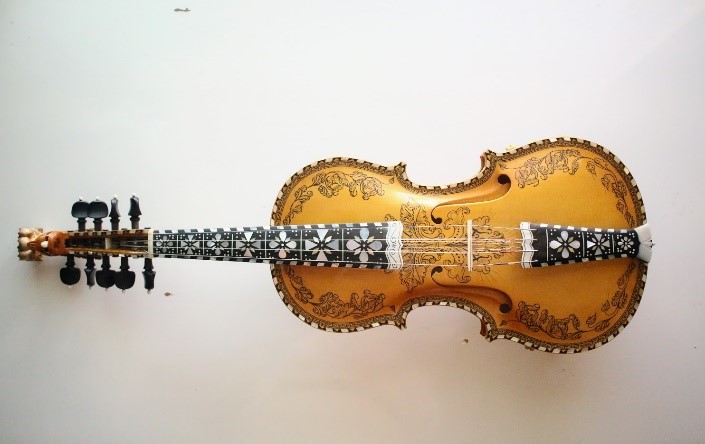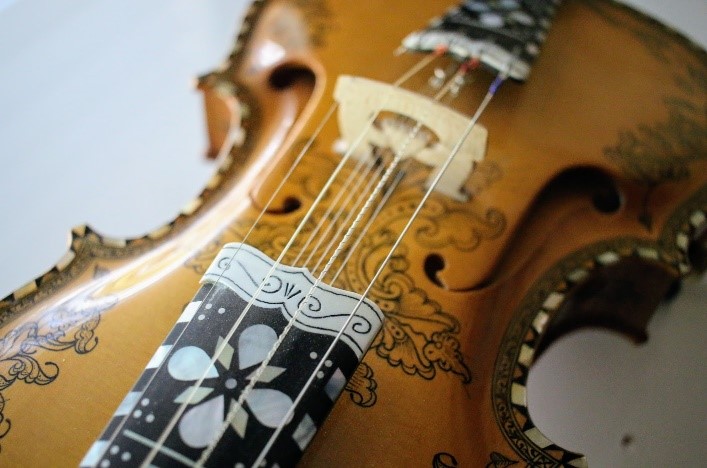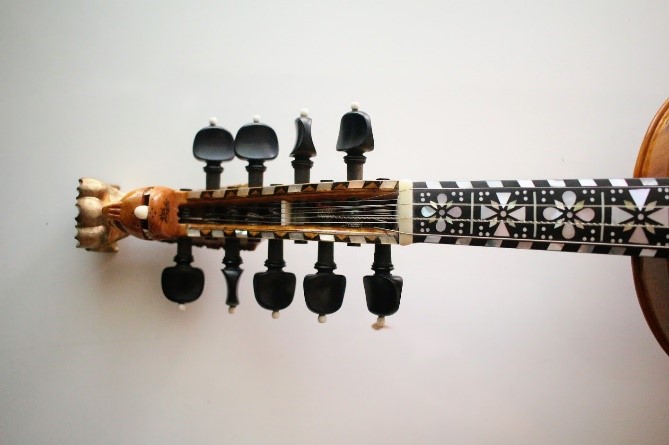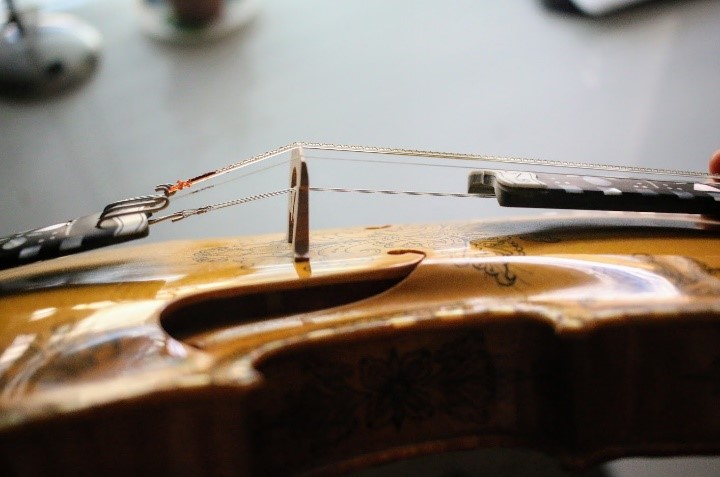Ari Johnson, MLC Class of 2023
Throughout history, tribes, peoples, and nations have created ways of making music. Music has contributed to religion, politics, and culture. We can look back and see musical stamps in small villages in Africa, big cathedrals in Italy, and the forests of Germany. The northern region of Scandinavia is no different. Years ago, the Hardanger Fiddle or hardingfele was created in the south of Norway. The Hardanger Fiddle contributed to the folk fiddling tradition of Norway. Folk music creates the sounds of a country. It draws one back to a simpler time, to a time of hard work at the loom, or in the forests and fjords, of long winter evenings spent singing around the central fireplace, and of solemn processions and joyous wedding feasts with the family gathered from afar.

The Hardanger Fiddle bears a strong resemblance to the violin. Like the violin, you play it on your shoulder and play the strings with a bow. There are some differences though which make the instrument unique and distinct to Norway. Along with the 4 basic strings, there are four or five sympathetic strings that rest under the original strings. These sympathetic strings are never played on. They resonate with the sound in a way that adds the original strings. The bridge of the instrument is flatter than the violin which is what makes the drone sound of the instrument possible. Each fiddle is decorated with pearl inlay and rosing patterns on the body. The tailpiece is carved in the shape of a maiden or a lion or dragon. The neck on the instrument is shorter than the violin which means all songs are typically only played in one position. Because of this the instrument rarely has a chinrest as shifting is unnecessary.

The fiddle originates from the Hardanger Fjord in Norway. The oldest known fiddle was made by Olav Jonsson Jaastad from Ulenvang and may date from as early as 1651. By the middle of the 18th century, it had become the dominant folk instrument in much of Norway. Today it is one of the few Scandinavian folk music traditions that has survived the cultural change that has happened in centuries past. Today the instruments are still handmade in Norway by craftsmen. As people have immigrated to America the tradition of the fiddle has come with them. In the United States, there are only a few makers who can make these instruments. The Hardanger Fiddle Association of America strives to keep this folk tradition alive among people in the United States and Norway.
Most fiddle music differs from classical music in sound, but also in purpose. The primary purpose of the Hardanger Fiddle is to be played for listeners but especially for dancers. The tunes are most associated with Norwegian bygdedans (or village dance) which is the regional, traditional dance of Norway along with the springar and gangar. These dances are found in areas such as Hallingdal, Telemark, Setesdal, Valdres, and on the west coast of Norway in Voss, Jolster, and Sogn. The music is polyphonic as it is almost always played with at least two strings at a time. Most fiddle players do not ever learn to read Hardanger fiddle music. One of the reasons is that the music is rarely written down and because the tradition of learning to play comes from listening and improvising. There are more than 100 tunings for the instrument which makes it even more challenging to play. One of the beautiful and frustrating aspects of playing a folk instrument such as the Hardanger fiddle, or any instrument for that matter, is that there are many different ways that it can be played and there is no single right answer for all, but instead many right answers for different players.
The music of the past allows us to hear and see what life might have been like. It allows us to imagine how the festivals, ceremonies, and dances looked for those who came before. With the constant change in music and culture, it is important to remember the roots of where it originated. The Hardanger Fiddle represents an entire nation. It showcases the sounds of the past. The fiddle allows us the rare experience of hearing what celebrations might have sounded like in 1650. This experience is worth preserving.


Sources: